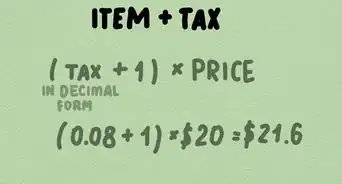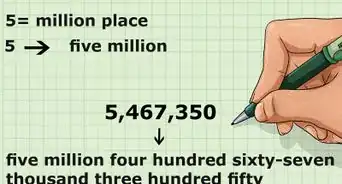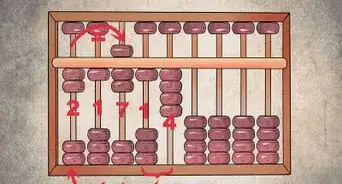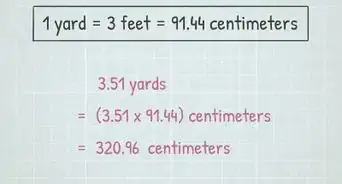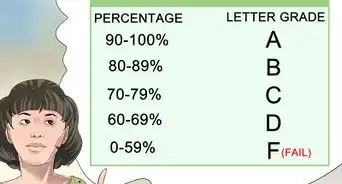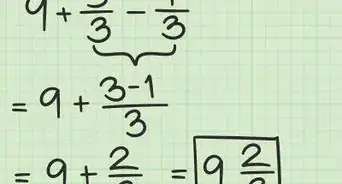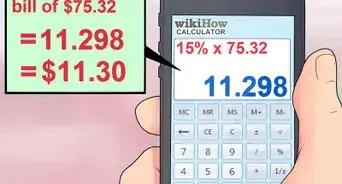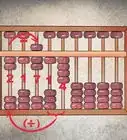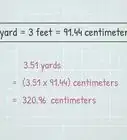This article was co-authored by wikiHow staff writer, Christopher M. Osborne, PhD. Christopher Osborne has been a wikiHow Content Creator since 2015. He is also a historian who holds a PhD from The University of Notre Dame and has taught at universities in and around Pittsburgh, PA. His scholarly publications and presentations focus on his research interests in early American history, but Chris also enjoys the challenges and rewards of writing wikiHow articles on a wide range of subjects.
This article has been viewed 1,665 times.
Learn more...
For a chemical reaction to happen—for instance, for logs on a fire to ignite—a certain energy threshold must be reached. Calculating activation energy requires some advanced math skills, but we’ll walk you through the process using common test question types. So, if your own “activation energy” to get your homework done is flagging, don’t worry—we’re here to help!
Things You Should Know
- Use the Arrhenius equation as your starting point for calculating activation energy: k = Ae^(-E_a/RT).
- Rearrange the equation to E_a = -R * T * ln(k/A) if you’re given one temperature reading and the pre-exponential factor.
- Adjust the equation to E_a = R * ln(k_1/k_2) / (1/T_2 - 1/T_1) if you’re given two temperature readings and two rate constant amounts.
Steps
Sample Problem (Type 1)
-
1If the rate constant is 21 M^(-1)s^(-1) at 234 K and the pre-exponential factor is 31 M^(-1)s^(-1), what is the activation energy? This type of question provides you with the pre-exponential factor (or frequency factor), which means you can calculate the activation energy at a single temperature value. (The other common type of activation energy question provides you with two temperature values, but not the pre-exponential factor.)[2]
- The pre-exponential factor is a temperature-dependent representation of the frequency of molecular collisions.
-
2Rearrange the Arrhenius equation to solve for E_a. In the Arrhenius equation [k = Ae^(-E_a/RT)], E_a represents the activation energy, k is the rate constant, A is the pre-exponential factor, R is the ideal gas constant (8.3145), T is the temperature (in Kelvins), and e is the exponential constant (2.718). You can rearrange the equation to solve for the activation energy as follows:[3]
- k = Ae^(-E_a/RT)
- ln(k) = -E_a/R * 1/T + ln(A)
- E_a = -R * T * ln(k/A)
-
3Input the given data into the rearranged equation. The question gave you the temperature (234 K), the rate constant (21), and the pre-exponential factor (31), so plug these into the correct spots:[4]
- E_a = -R * T * ln(k/A)
- E_a = -8.3145 * 234 * ln(21/31)
-
4Solve the equation. Grab a scientific calculator (or an online version) and use it to determine the activation energy (given in J/mol, or, in some cases, kJ/mol, which is just J/mol divided by 1000).[5]
- E_a = -1945.6 * ln(0.38946)
- E_a = -1945.6 * -0.38946
- E_a = 757.7 J/mol (0.7577 kJ/mol)
Sample Problem (Type 2)
-
1What is the activation energy of a reaction if the rate constant is 33 M^(-1)s^(-1) at 298 K and 45 M^(-1)s^(-1) at 675 K? This form of question omits the pre-exponential factor but provides two temperature readings (and two rate constants). You’ll still get the answer by using the Arrhenius equation—just rearranged differently.[6]
- As a refresher, the original Arrhenius equation is k = Ae^(-E_a/RT).
-
2Use the equation form for multiple temperatures and constants. Without going into extensive detail here, let’s just say that the original Arrhenius equation can be rearranged into the following form: ln(k_1/k_2) = -E_a/R * (1/T_2 - 1/T_1). (Remember that k represents the rate constant, T the temperature, R the ideal gas constant, and E_a the activation energy.) This can be further rearranged to solve for the activation energy:[7]
- E_a = R * ln(k_1/k_2) / (1/T_2 - 1/T_1)
-
3Plug in the given data. The first given rate constant and temperature are k_1 and T_1, while the second are k_2 and T_2:[8]
- E_a = R * ln(k_1/k_2) / (1/T_2 - 1/T_1)
- E_a = 8.3145 * ln(33/45) / (1/675 - 1/298)
-
4Solve for E_a to get the result in J/mol. If you’re asked to provide the answer in kJ/mol, simply divide by 1000.[9]
- E_a = 8.3145 * ln(33/45) / (1/675 - 1/298)
- E_a = 8.3145 * ln(0.73333) / (0.0014814 - 0.0033557)
- E_a = 8.3145 * -0.31016 / -0.0018743
- E_a = 1375.9 J/mol
More Examples
-
1If the rate constant is 45 M^(-1)s^(-1) at 333 K and the pre-exponential factor is 78 M^(-1)s^(-1), what is the activation energy?
- k = Ae^(-E_a/RT)
- ln(k) = -E_a/R * 1/T + ln(A)
- E_a = -R * T * ln(k/A)
- E_a = -8.3145 * 333 * ln(45/78)
- E_a = -2768.7 * ln(0.57692)
- E_a = -2768.7 * -0.55005
- E_a = 1522.92 J/mol
-
2If the rate constant is 32 M^(-1)s^(-1) at 517 K and the pre-exponential factor is 95 M^(-1)s^(-1), what is the activation energy?
- k = Ae^(-E_a/RT)
- ln(k) = -E_a/R * 1/T + ln(A)
- E_a = -R * T * ln(k/A)
- E_a = -8.3145 * 517 * ln(32/95)
- E_a = -4298.6 * ln(0.33684)
- E_a = -4298.6 * -1.0881
- E_a = 4677.3 J/mol
-
3What is the activation energy of a reaction if the rate constant is 19 M^(-1)s^(-1) at 222 K and 78 M^(-1)s^(-1) at 451 K?
- k = Ae^(-E_a/RT)
- ln(k_1/k_2) = -E_a/R * (1/T_2 - 1/T_1)
- E_a = R * ln(k_1/k_2) / (1/T_2 - 1/T_1)
- E_a = 8.3145 * ln(19/78) / (1/451 - 1/222)
- E_a = 8.3145 * ln(.24359) / (0.0022173 - 0.0045045)
- E_a = 8.3145 * -1.4122 / -0.0022872
- E_a = 5133.7 J/mol
References
- ↑ https://fs.blog/activation-energy/
- ↑ https://www.chemguide.co.uk/physical/basicrates/arrhenius.html
- ↑ https://www.chemguide.co.uk/physical/basicrates/arrhenius.html
- ↑ https://www.geeksforgeeks.org/activation-energy-formula/
- ↑ https://www.geeksforgeeks.org/activation-energy-formula/
- ↑ https://chemed.chem.purdue.edu/genchem/topicreview/bp/ch22/activate.php
- ↑ http://vandenbout.cm.utexas.edu/courses/ch302s09/files/CH302_041409a.pdf
- ↑ https://chemed.chem.purdue.edu/genchem/topicreview/bp/ch22/activate.php
- ↑ http://vandenbout.cm.utexas.edu/courses/ch302s09/files/CH302_041409a.pdf





